As the only component on your car that actually makes contact with the road surface, tyres are critical for safety when driving. In this comprehensive guide, we outline everything you need to know about car tyres, from reading and setting pressures to working out what size tyres you need. Following the advice laid out here will save you money, minimise hassle and - most importantly - keep yourself and others safe out on the road.
What are tyre speed ratings?
A tyre speed rating is the maximum speed a particular tyre is legally approved for. The rating is represented by a letter displayed on the tyre sidewall. It will always be the last letter in the sequence. If the sidewall reads 205/55 R16 W 91, for instance, the speed rating is W. Each letter has a corresponding maximum speed, so in the case of a tyre with a W speed rating, that tyre is approved for speeds up to 168mph.
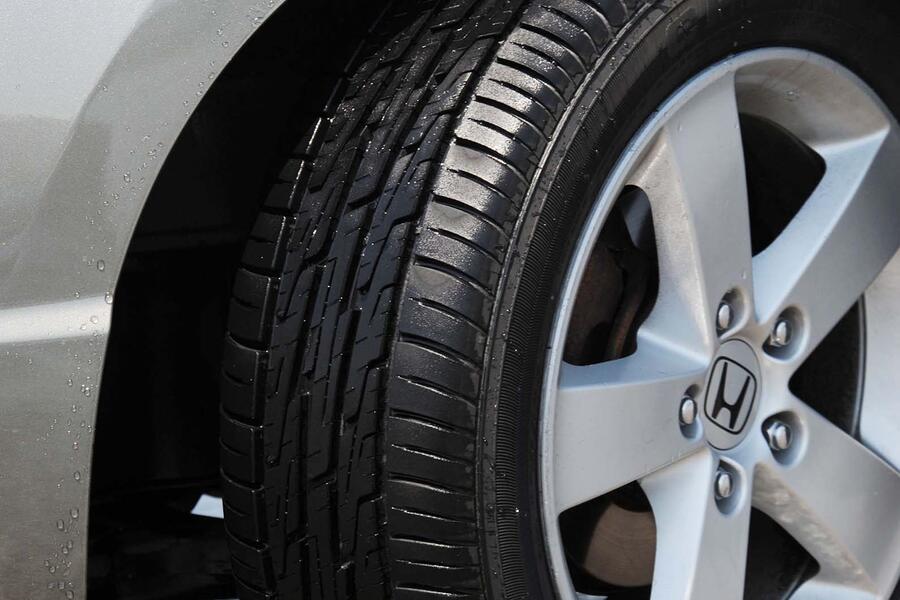
For safety reasons, it’s important your car’s top speed does not exceed the tyre’s speed rating. A full list is shown below.
N - 87mph
P - 93mph
Q - 99mph
R - 106mph
S - 112mph
T - 118mph
U - 124mph
H - 130mph
V - 149mph
Z - 150mph+
W - 168mph
Y - 186mph
What is the UK legal tyre limit?
The minimum tread depth required by law in the UK is 1.6mm. This applies to the central three-quarters of the tyre’s width and its entire circumference. Many car manufacturers, however, advise changing your tyres once the tread is down to 3mm to be on the safe side.
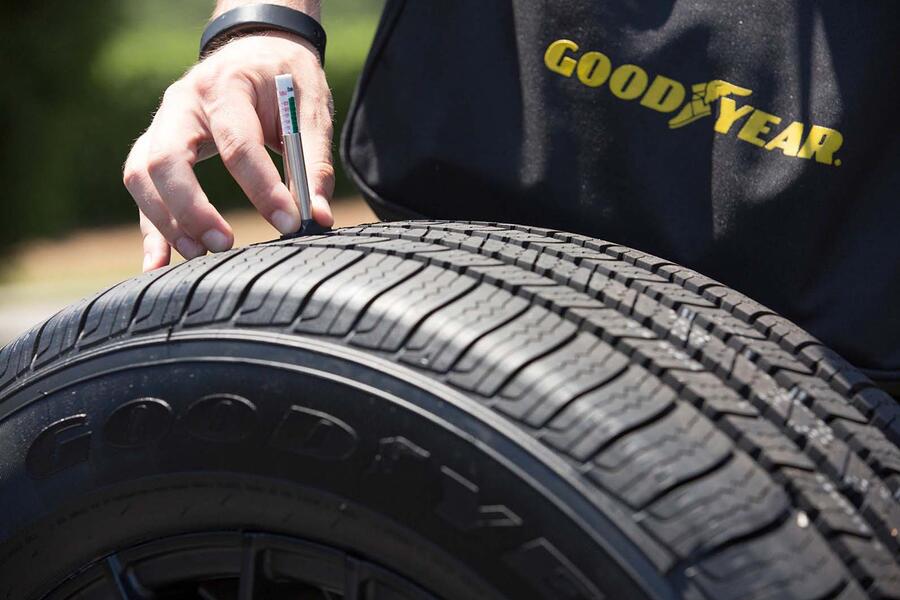
The fine for driving a car on the road with a tyre that has less than 1.6mm of tread is £2500 and three penalty points on your licence. Therefore, if all four tyres are below that legal limit, you will face a £10,000 fine and 12 penalty points - which means a six-month driving ban.
What should my tyre pressures be?
You will find the correct tyre pressures for your car on a sticker attached to the door frame, inside the fuel filler flap or in the handbook. Be aware that the car manufacturer might recommend different tyre pressures for the front compared to the rear. You will also see different recommended pressures for different load levels - such as only two occupants in one case, and a full family with luggage in the other - so make sure you choose the correct pressures for the load you’re carrying.
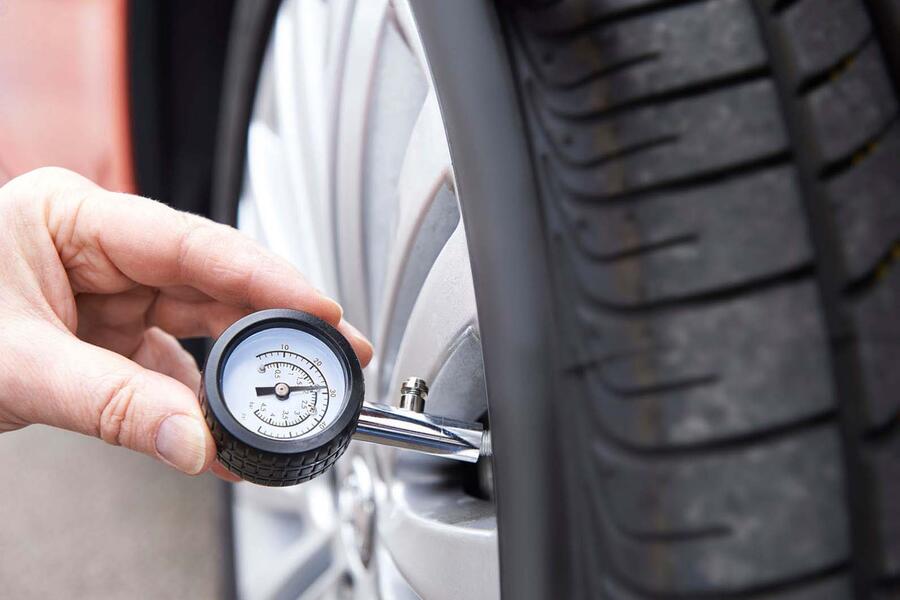
It’s very important that your tyre pressures are set correctly. If the pressures are too low, the car will feel unstable and perhaps be unsafe to drive, the tyres will wear very quickly and fuel economy will suffer. If they are set too high, the tyres will not generate as much grip as they should and they’ll wear heavily across the central band of the tread.
How do you read the markings on a tyre?
The markings on a tyre indicate its size, load index and speed rating. A typical tyre marking looks like this - 205/55 R16 W 91.
The first three digits - 205 - refer to the tyre’s width in millimetres.
The second two digits - 55 - refer to the tyre’s aspect ratio, which is the height of the sidewall expressed as a percentage of the tyre’s width. Therefore, an aspect ratio of 55 means the sidewall is 55% as tall as the tyre is wide.
R stands for radial, which indicates the tyre is constructed with its cord plies positioned at 90deg to the direction of travel, which adds strength. Almost all new tyres are radial.
The two-digit number that follows, in this case 16, indicates the diameter in inches of the wheel that particular tyre can be fitted to.
The last letter is the speed rating, which is the maximum speed the tyre is legally approved for. A speed rating of W indicates a maximum speed of 168mph. Scroll up for a full list of speed ratings.
Finally, the last two-digit number is the load rating. In this case, a load rating of 91 means that one tyre is legally approved to carry a load of 615kg.
How to check tyre tread depth
An easy way of checking that your tyres have enough tread depth (the legal minimum in the UK is 1.6mm) is to take a 20 pence piece and slot it into the tread at the point where the tread is at its shallowest.
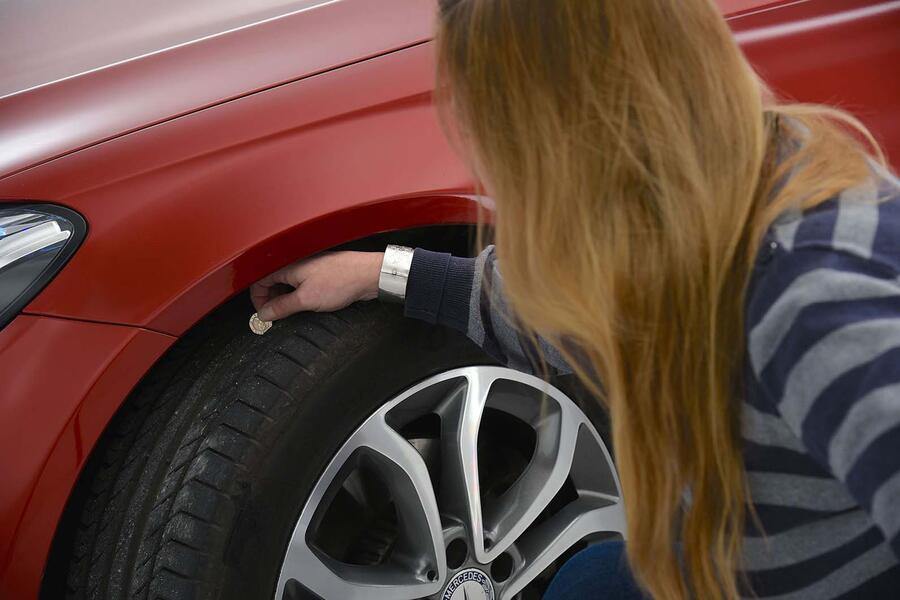
If you can’t see the outer rim of the coin, your tyres have plenty of tread left and are safe. If you can see the rim, your tyres may be approaching the 1.6mm limit, or they’re already below that. In either case, it’s time for new tyres.
How often should I replace my tyre valve?
The valve is a part of the wheel rather than the tyre. Made from rubber, it can perish over time and may leak air at a significant rate, or at least make checking your tyre pressures difficult. Ideally, you should change the valve every time you replace your tyres.
The cost of replacing tyre valves is minimal. In fact, you will often find this cost is included in the price of a new tyre.
Tyre pressure conversion chart
Tyre pressures can be expressed in two ways - bar and psi. You will often see both quoted together for the sake of clarity. If not, converting one to the other is very straightforward.
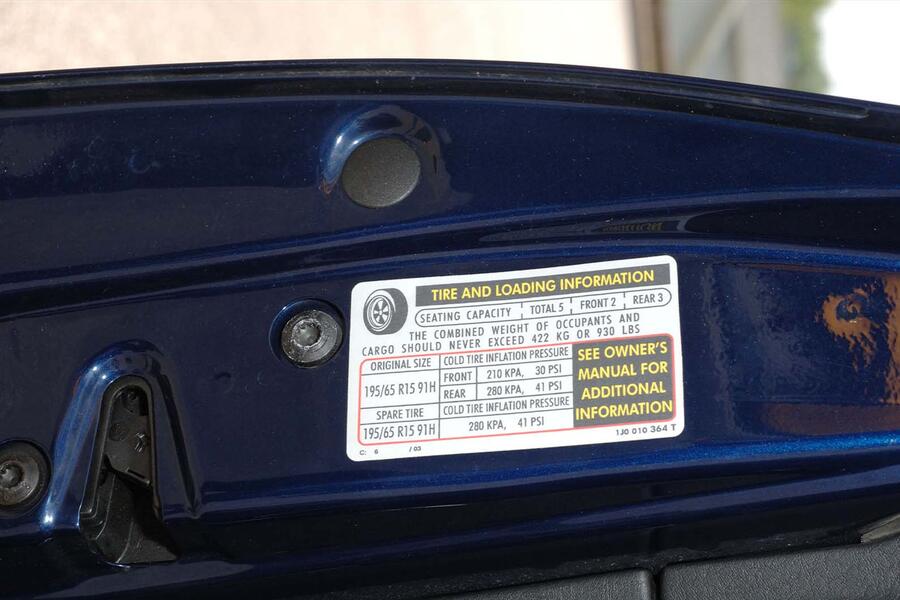
To convert bar to psi, multiply the bar number by 14.5. To convert psi to bar, multiply the psi number by 0.06895.
Alternatively, use the conversion chart below.
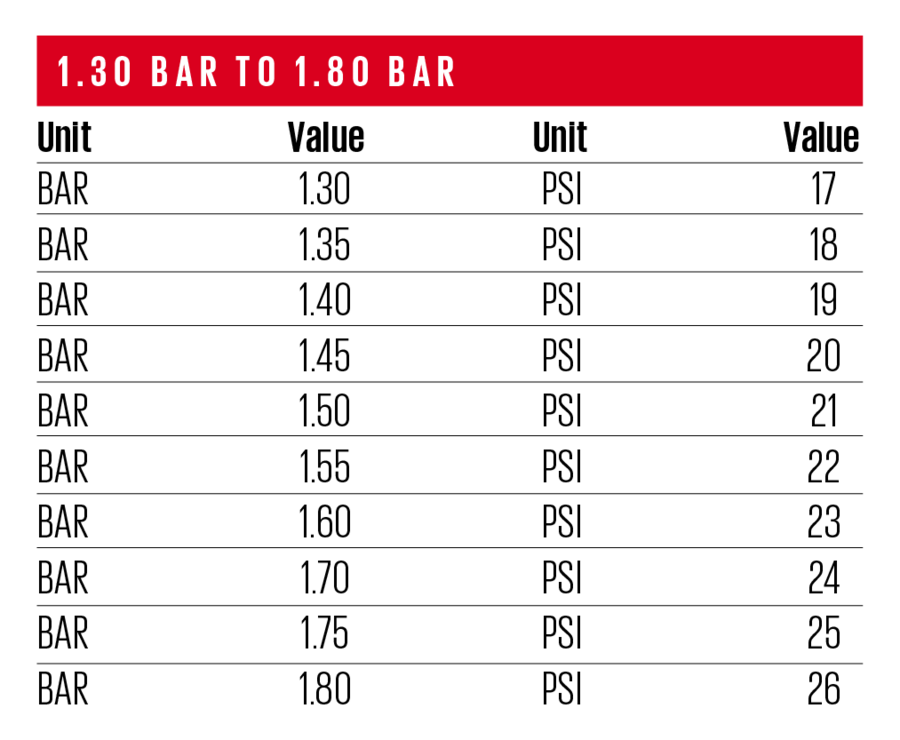
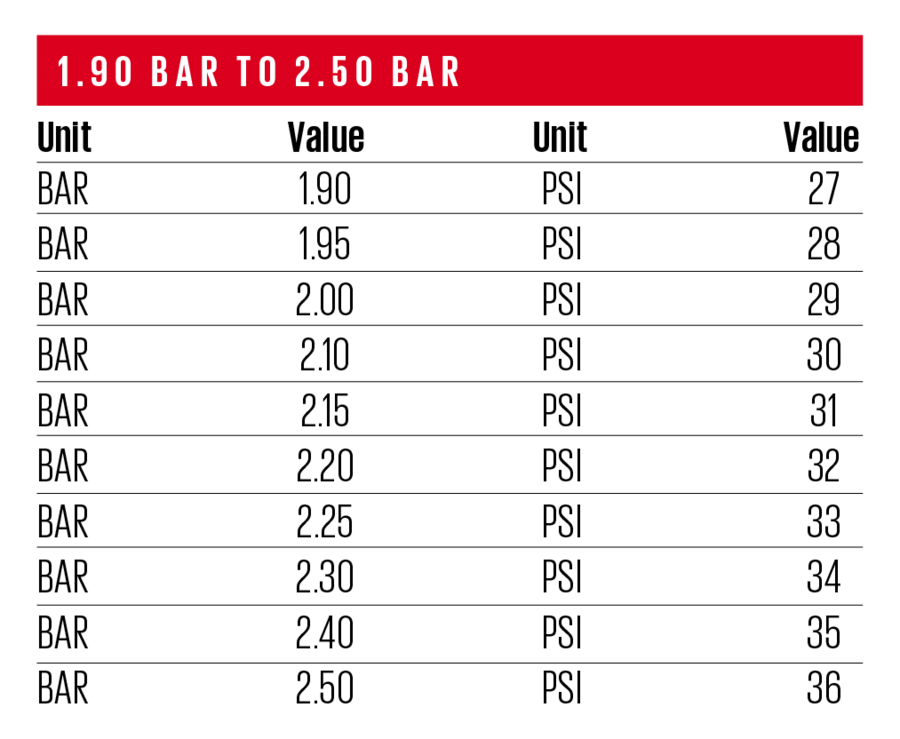
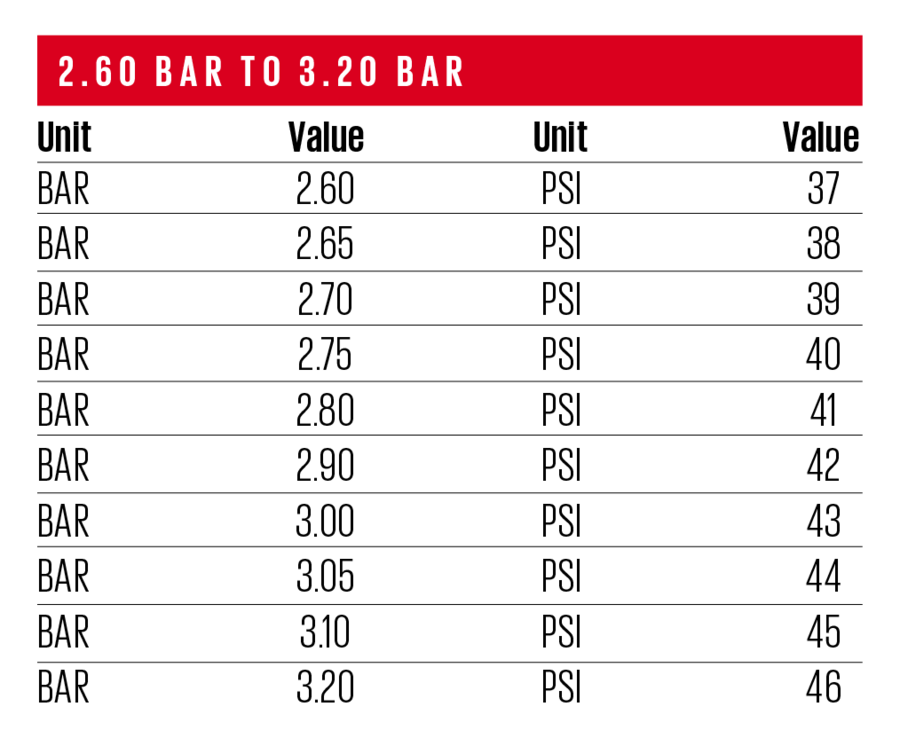
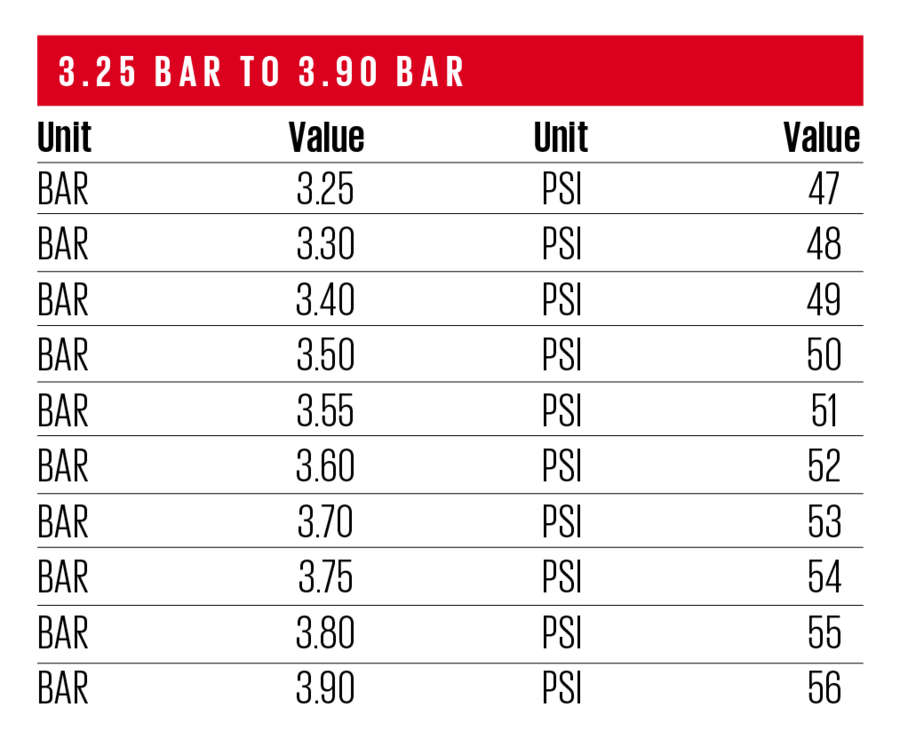
How do I check my tyre pressures?
First of all, you should check your car’s handbook, the sticker that you’ll find on the door frame or inside the fuel filler flap, or simply search online, to find the correct tyre pressures for your car and its load level. You should then remove the dust cap from tyre valve and, using a tyre pressure gauge, read the current pressure. You should add air using an electric compressor if the pressure is too low and remove air if too high. If you do not have a tyre pressure gauge or a compressor, most petrol stations will have an air line.
Remember, tyre pressures will increase with heat and reduce in the cold. That means you should check and adjust your tyre pressures in representative ambient temperatures (don’t set them in a warm garage if it is cold outside, for instance) and when the tyres themselves are cool rather than hot.
What is a tyre pressure monitoring system?
Most modern cars will have an in-built tyre pressure monitoring system, which constantly monitors your tyre pressures and warns you if they are too low. When your pressures fall beneath the manufacturer’s recommended level, the TPMS will illuminate a warning light within the instrument binnacle. You’ll know your car has a TPMS if you see this warning light appear briefly when you turn on your car’s ignition (it will quickly switch off again as long are your tyre pressures are correct). TPMS is a legal requirement on cars built after 2014.
There are two types of TPMS. The first is indirect type, which uses the ABS to approximate tyre pressures. The second and more advanced is direct type, which actually uses a tiny pressure gauge to gather exact data.
On higher-end cars, the TPMS will be able to display your exact tyre pressures in real time on the dashboard. TPMS is good for safety, but only if it is working properly. Therefore, it’s advisable to manually check your pressures from time to time.
What size tyres for my car?
The easiest way to work out what size tyres you need for your car is to check the tyres that are already on it. You will see the tyre size marked on the sidewall. Be aware that the front and rear tyres may well be a different size.
You can also use websites such as blackcircles.com to search for the correct tyre size by inputting your car’s registration number. Depending on your car you may be offered a range of tyre sizes, in which case you should refer to the sidewalls of the tyres currently fitted to it.
How long do car tyres typically last?
There are too many variables to give a definitive answer to that question. High-performance tyres will have a much shorter life than fuel-saving low rolling resistance tyres, while your driving style, the type of car you drive and the sort of driving you mostly do will also be very significant factors in determining tyre life.
As a general rule of thumb, a tyre of reasonable quality fitted to the front axle of a front-wheel-drive car should last for around 20,000 miles.
What's the penalty for bald tyres?
The fine for driving a car on the road with a tyre that has less than 1.6mm of tread is £2500 and three penalty points on your licence. Therefore, if all four tyres are below that legal limit, you will face a £10,000 fine and 12 penalty points - which means a six-month driving ban.
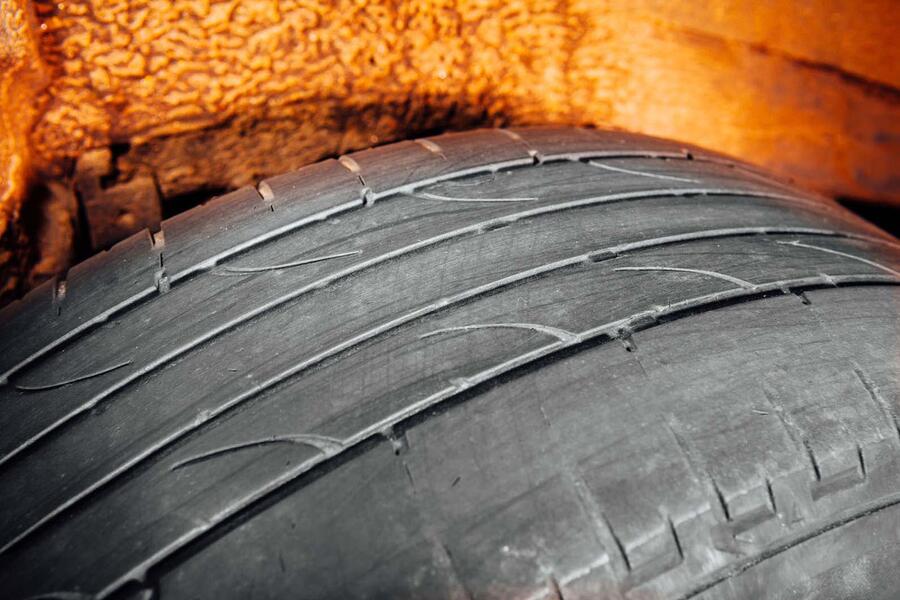
That’s probably the best-case scenario, however. Since bald tyres are extremely dangerous, particularly in the wet, the biggest risk you face when driving on very worn rubber is having a serious accident.
What is the law on having a spare tyre?
There is no law in the UK that states drivers should carry a spare tyre. However, given that carrying a spare wheel and tyre could be the difference between a mere 15-minute interruption to your journey as you replace a flat and being stranded for hours by the side of the road should you pick up a puncture, we would highly recommend having one.
Spare tyres will very often be space-saver type, which are the same diameter as a regular wheel and tyre, but much narrower. With a space-saver fitted, your top speed will be reduced to 50mph. They’re really only intended to get your home or to the nearest garage.
However, many cars will only be supplied these days with a repair kit. This is a type of expanding foam that you squeeze into the punctured tyre through the valve before reinflating that tyre using an electric compressor. The foam plugs the puncture and allows you to continue, albeit at restricted speeds and for a limited number of miles.
How often should I replace my tyres?
Legally, you are required to replace your tyres as soon as the tread depth is down to 1.6mm. However, to stay on the side of caution it’s advisable to swap them at 3mm. Rubber can perish over time, so even if a tyre has plenty of tread left it might not be safe to use once it’s more than five years old.
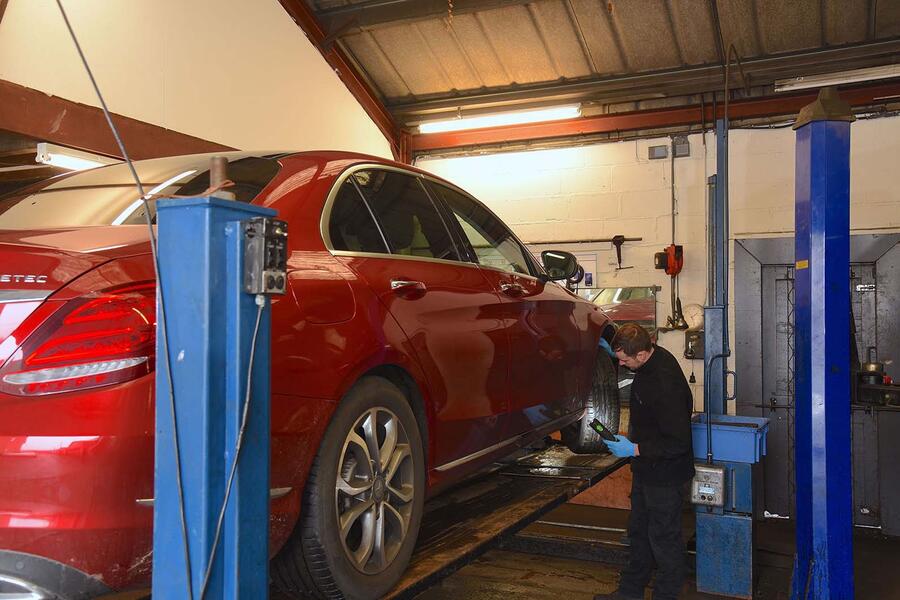 It’s impossible to say how long a tyre should last because there are so many variables - the type of car they’re fitted to, the type of driving you mostly do and your driving style are just three factors. What’s more, a high-performance tyre will have a much shorter life than a low rolling resistance tyre.
It’s impossible to say how long a tyre should last because there are so many variables - the type of car they’re fitted to, the type of driving you mostly do and your driving style are just three factors. What’s more, a high-performance tyre will have a much shorter life than a low rolling resistance tyre.
How can I make my tyres last longer?
The key to prolonging tyre life is keeping the pressures at the level recommended by the car manufacturer. Too little pressure will cause tyres to wear out very quickly, while too much pressure will cause excessive wear to the central band of the tread. You should also have your wheel alignment checked regularly by a garage as tyres will wear very quickly if the alignment is out by even a small amount.
Driving carefully in corners and avoiding wheelspin will also help to reduce tyre wear. If you drive a front-wheel-drive car, you can switch the tyres from the front axle to the rear, and vice versa, once the tyres on the front are into the final third of their useful life.
Should I get winter tyres?

You should seriously consider having winter tyres fitted for the colder months. The important thing to note about winter tyres is that they are not only designed for ice and snow. In fact, as long as the ambient temperature is below 7deg C, they will provide more grip and therefore be safer than summer tyres, even on a dry road. They are far more effective on snow and ice, too, which could be the difference between getting home during a snowstorm and being stuck by the side of the road.
As an alternative, all-season tyres can be an effective year-round solution, although they are by their nature a compromise.

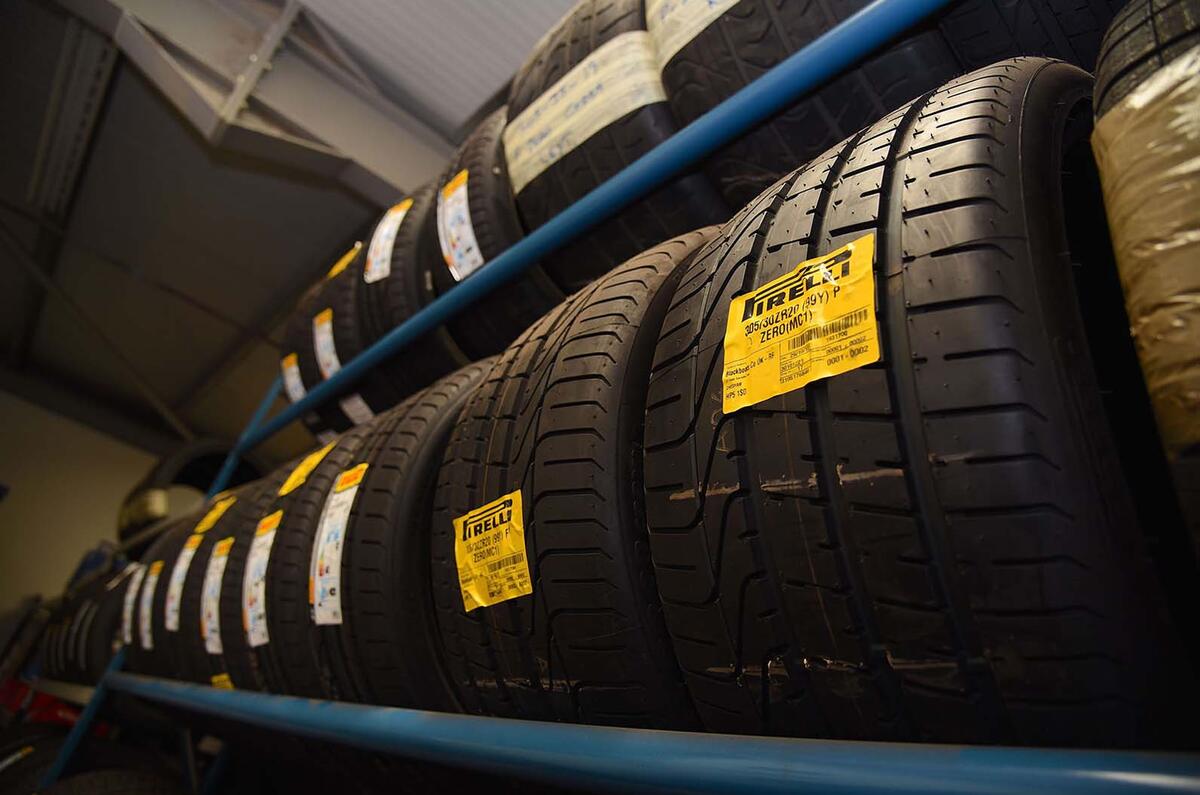


Join the debate
Add your comment
to the point information .. keep it up
Alliance Motors & Body Repairs
direct tpms
Not cheap to replace the sensors, can and do eventually leak from their 0-ring seals (slow puncture that's leaking from the valve), and can have corroded threads that the tyre shop can't get loose. There's also different types of the sensors, as they're made by different companies
Date Codes
Should have been included in the article, but you can tell the age of a tyre from the date code stamped on the sidewall. This is a 4-digit number in an oval border where the first two digits are the week it was made and the last two digits the year, so e.g. 4219 would be the 42nd week of 2019.